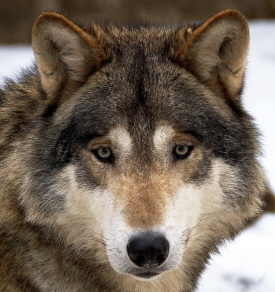 Key Facts
Key Facts
· Common Names
Grey wolf, timber wolf, common wolf, tundra wolf, mexican wolf, plains wolf
· Scientific Name
Canis lupus
· Status
Least concern;
· Geographic Location
Asia, Canada, Europe, USA
Physical Description:
The grey wolf varies in colour and size according to where they live. The grey wolf has strong jaws with sharp canine and teeth for tearing and chewing meat.
Size:
Length: 120-200cm
Height: 70-80cm
Weight: 20-60kg
Length: 120-200cm
Height: 70-80cm
Weight: 20-60kg
Hunting:
Wolves usually hunt in family of between 3 and 30 wolves.
Hunting together helps wolves kill large animals such as moose or elk. They are good swimmers and when necessary pursue their prey into water.
A big appetite:
The timber wolf can eat a lot of meat at one meal and then go without food for a considerable time. . It also eats fish, crabs and dead animals.
Family life:
Mating takes place in late winter or early spring. A litter of 4-6 pups are born 2 months later. The family stays together for some time while the parents teach the pups hunting skills. In about a year, the cubs reach adulthood, but may stay for longer.
The wolf's biggest enemy is man. For many centuries, wolves have been trapped, shot and poisoned because people fear that wolves present a danger to cattle and sheep. They were killed for their fur.
Wolves seldom attack humans. As long as there is plenty of natural prey, wolves prefer not to attack domestic livestock.
What is WWF doing?
WWF is helping wolves spread into suitable remote areas from areas where they already exist.
This includes research projects to evaluate wolf populations and measures to address the concerns of farmers and other local inhabitants who feel threatened by the presence of wolves.
Nenhum comentário:
Postar um comentário